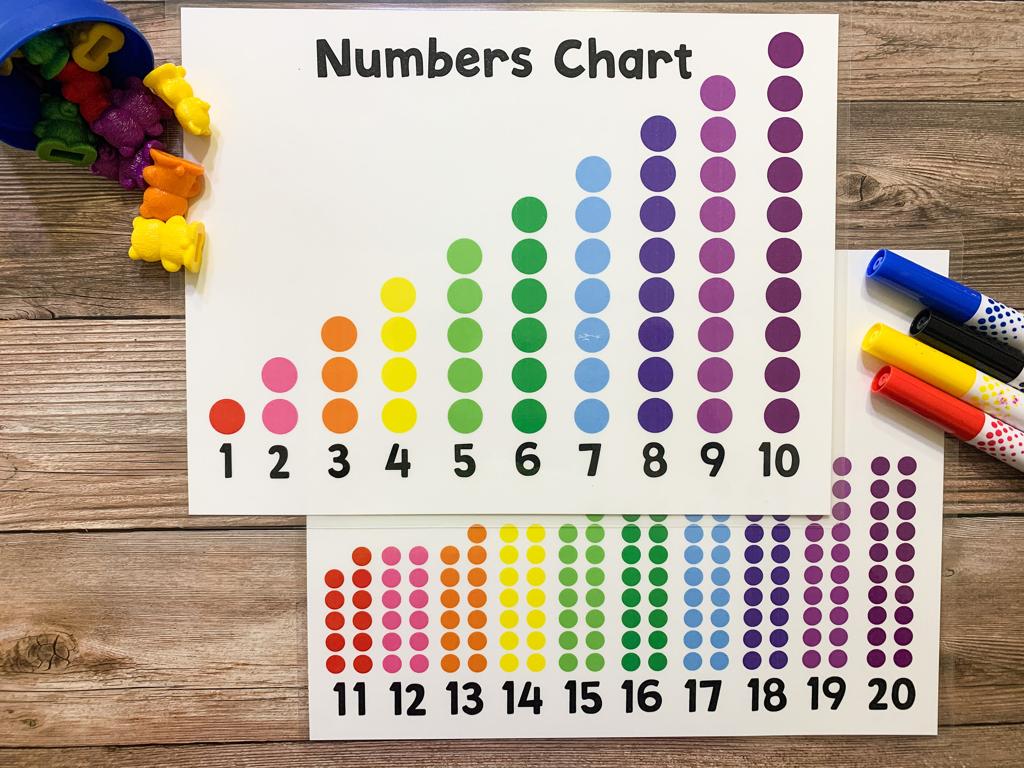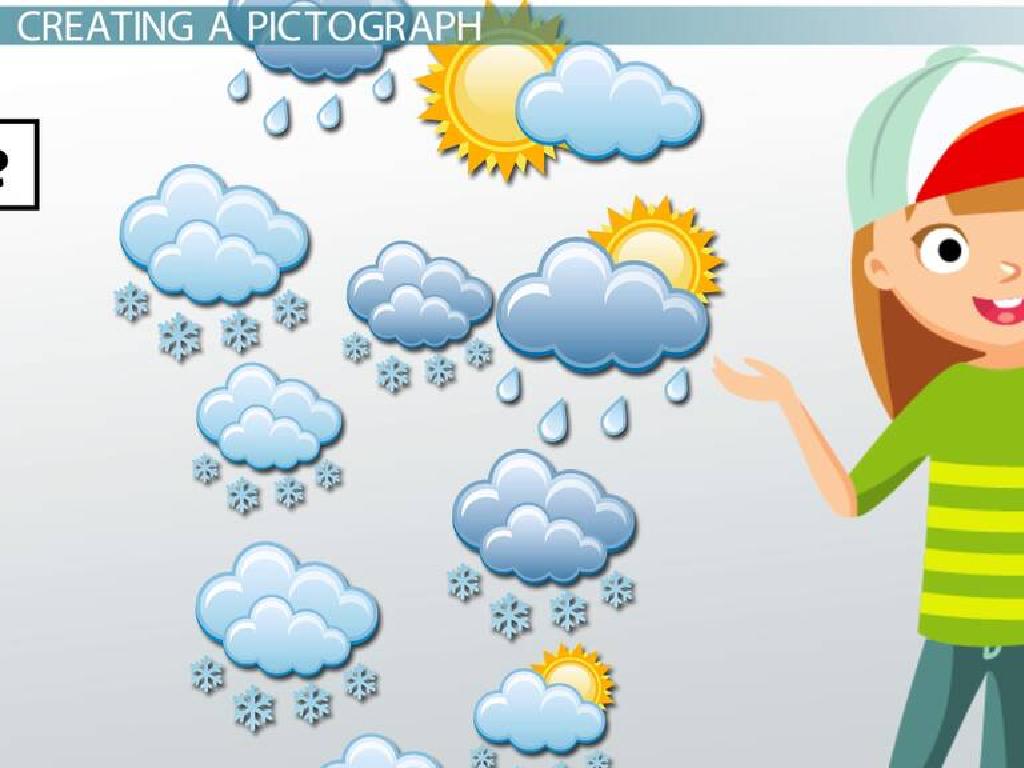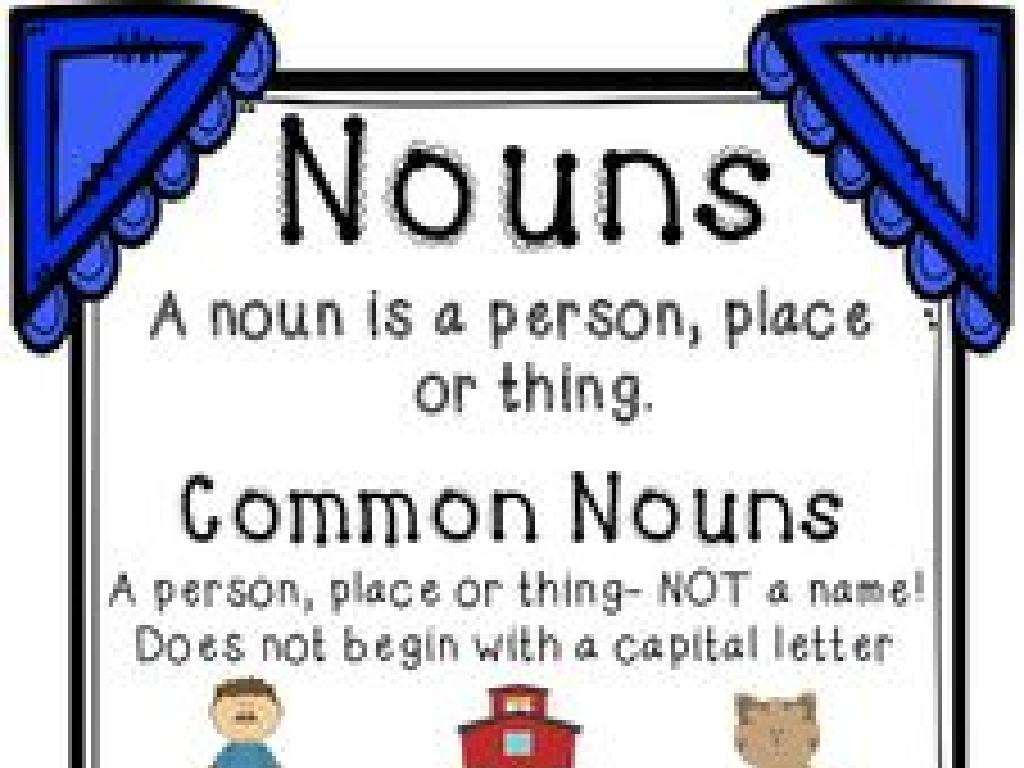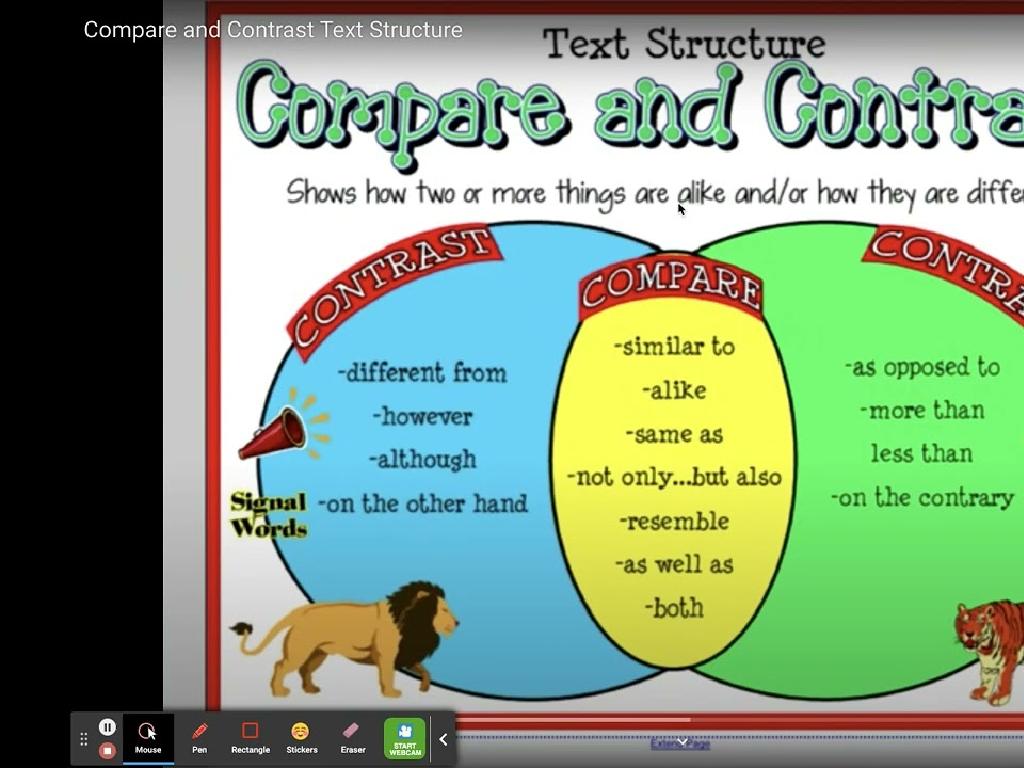Count Money - Pennies And Nickels
Subject: Math
Grade: Kindergarten
Topic: Money
Please LOG IN to download the presentation. Access is available to registered users only.
View More Content
Welcome to Money Math: Pennies and Nickels
– What is money?
– Meet the penny and nickel
– A penny is worth 1 cent, a nickel is worth 5 cents
– Each coin’s value
– 1 penny = 1 cent, 5 pennies = 1 nickel
– Using money to buy things
– We use pennies and nickels to pay for small items like candies
|
This slide introduces Kindergarten students to the concept of money, focusing on pennies and nickels. Start by explaining what money is and why it’s important. Show them real coins or images of a penny and a nickel, and explain that a penny is worth 1 cent and a nickel is worth 5 cents. Help them understand the value of each coin by comparing numbers of pennies to nickels. Emphasize that money is used to buy things we want or need, like toys or snacks. Encourage the children to think of items they could buy with pennies and nickels. Plan a simple class activity where students can practice exchanging pennies for nickels to reinforce the concept.
What is Money?
– Money buys needs and wants
– Money includes coins and bills
– Different coins, different values
– Pennies are 1 cent, nickels are 5 cents
|
This slide introduces the concept of money to Kindergarten students. Begin by explaining that money is used to purchase things we need, like food and clothes, and things we want, like toys. Show them both coins and paper bills, explaining that these are all money but come in different forms. Emphasize that each type of money has a different value; for example, a penny is worth 1 cent, and a nickel is worth 5 cents. Use real coins or play money to help them visualize and understand the concept. Encourage the children to touch and count the coins, helping them to recognize the differences. This tactile experience will aid in their understanding of the value of different coins.
Meet the Penny: Our Smallest Coin
– A penny is worth 1 cent
– Smallest value US coin
– Pennies are copper-colored
– It’s not actually made of copper, but it looks like it!
– Abraham Lincoln is on the penny
– He was the 16th president of the USA.
|
This slide introduces the penny to Kindergarten students, helping them recognize and understand the value of the coin. Emphasize that a penny is the smallest amount of money you can have in the US currency, and it’s worth 1 cent. Show them real pennies and point out the color and the picture of Abraham Lincoln on one side. Explain that while pennies look like they are made of copper, they are actually made of a mix of metals. Share a fun fact about Abraham Lincoln being an important president. Encourage the children to find pennies at home and bring them to class for a hands-on activity.
Meet the Nickel
– A nickel is worth 5 cents
– Equal to five pennies
– 5 pennies make 1 nickel
– Nickels are bigger than pennies
– Compare size with a penny
– Thomas Jefferson is on the nickel
– Recognize the face on the nickel
|
This slide introduces kindergarteners to the concept of the nickel. Start by explaining that a nickel is a coin worth 5 cents, which is the same value as five individual pennies. Show them the physical size difference between a nickel and a penny to help them distinguish between the two coins. Point out the image of Thomas Jefferson on the nickel to help them recognize the coin. Use real coins to demonstrate these points if possible. Encourage the children to handle the coins and practice counting by fives to understand how nickels add up in value. This tactile experience will help solidify their understanding of the value of money and the relationship between different coins.
Counting Pennies
– Each penny equals one cent
– Counting steps with pennies: 1, 2, 3…
– Imagine taking steps, each step is one penny
– Let’s practice counting pennies
– We’ll count pennies together to learn their value
|
This slide is designed to introduce Kindergarten students to the concept of counting using pennies. Start by explaining that each penny is worth one cent, making it the basic unit of American currency. Use a visual aid, such as a number line or images of pennies, to help students visualize the counting process. Encourage them to count aloud as a group, reinforcing the concept that each penny adds one more to the total. Provide real or play pennies for hands-on practice, allowing students to count individually or in small groups. Reinforce the idea that counting pennies is like taking steps, one at a time, to reach a higher number. This activity will help build their counting skills and understanding of money value.
Counting Nickels
– Understanding nickels
– Each nickel is 5 cents
– A nickel is worth 5 pennies
– Counting by fives
– Practice: 5, 10, 15…
– Practice with real nickels
– Use nickels to count in class
|
This slide is focused on teaching Kindergarten students how to count nickels, emphasizing that each nickel is equivalent to 5 cents. Start by explaining what a nickel is and its value compared to pennies. Then, demonstrate counting by fives using nickels, which helps students understand the concept of skip counting and prepares them for addition. Encourage hands-on practice with actual nickels to solidify their understanding. Activities can include counting nickels in groups, matching number cards to piles of nickels, and simple addition problems using nickels.
Comparing Pennies and Nickels
– Counting pennies to make a nickel
– 5 pennies equal 1 nickel
– A nickel is worth the same as five one-cent pennies.
– Trading pennies for nickels
– Imagine swapping your pennies for a shiny nickel!
– Applying this to larger amounts
– If you have 10 pennies, that’s the same as 2 nickels!
|
This slide is aimed at helping Kindergarten students understand the value relationship between pennies and nickels. Start by explaining that both pennies and nickels are coins used in money, but they have different values. A penny is worth 1 cent, while a nickel is worth 5 cents. Show them that if they count out 5 pennies, they can exchange them for 1 nickel because both are equal in value. Use real coins or visual aids to demonstrate this concept. Then, explain that this knowledge can help them count larger amounts of money by grouping pennies into sets of 5 to ‘trade’ for nickels. Encourage students to practice with different numbers of pennies to reinforce the concept.
Let’s Practice Counting Money!
– Play a game with pennies and nickels
– I show a number, you make the amount
– Use pennies and nickels to count
– Example: For 7 cents, use 1 nickel and 2 pennies
– Ready to learn and have fun?
|
This slide introduces a playful, interactive activity to help Kindergarten students understand the concept of counting money using pennies and nickels. The teacher will show a number, and the students will use real or play coins to make that amount. This hands-on experience reinforces their counting skills and introduces them to the value of different coins. The teacher should prepare various numbers to show the students and have enough pennies and nickels for each child to participate. Possible activities include matching number cards to coin combinations, timed challenges for who can make the amount correctly the fastest, or pairing up students to take turns showing and making amounts.
Class Activity: Coin Sorting!
– Work in small groups
– Sort coins into pennies and nickels
– Count each type of coin
– How many pennies do you have? How many nickels?
– Calculate total money
– If you have 5 pennies and 2 nickels, how much money is that?
|
This activity is designed to help Kindergarten students recognize and differentiate between pennies and nickels, as well as to practice counting and simple addition. Divide the class into small groups and provide each group with a mixed pile of coins. Guide them to sort the coins into two groups: pennies and nickels. Once sorted, assist the students in counting how many of each coin they have. Then, help them understand the value of each coin and calculate the total amount of money they have. For example, each penny is worth 1 cent and each nickel is worth 5 cents. Encourage the students to work together and use their counting skills to find the total sum. Possible variations of the activity could include using real or play coins, providing different numbers of coins to each group, or timing the activity for a fun, competitive twist.
Counting Coins: Pennies and Nickels
– Congratulations on learning!
– Recall: Pennies equal 1 cent
– A penny is the smallest US coin.
– Recall: Nickels equal 5 cents
– A nickel is worth 5 pennies.
– Practice counting with family
– Use real coins to count at home.
|
Well done to all the students for learning about pennies and nickels today! Remember, a penny is worth 1 cent and is the smallest coin in the US currency, while a nickel is worth 5 cents. Encourage the children to practice counting by using real coins at home with their family members. This will help them reinforce what they’ve learned in class and become more familiar with using money in real-life situations. You can suggest to parents to turn this practice into a fun game, like setting up a small ‘store’ where children can ‘buy’ and ‘sell’ items using their coins.






